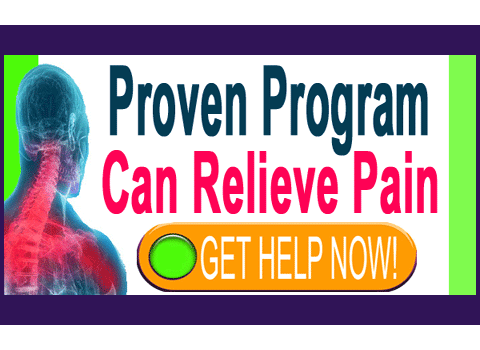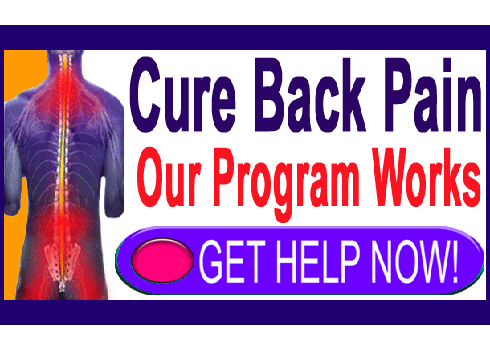
Discovering arthritis neck pain relief is a challenge, since few treatments address the underlying process that is causing pain and no therapy can actually cure osteoarthritis. OA is one of the main diagnostic reasons given to explain chronic neck pain, especially in adults past the age of 40. Osteoarthritis is virtually universal in the neck as we age, with hot spots of arthritic activity residing from C4 to T1 in the upper spinal region.
Arthritis remains a greatly understood process. Most patients do not realize that OA is a completely normal and expected part of aging and that the middle to lower cervical spinal region is the second most common part of the backbone to be affected by these degenerative changes. It always amazes us when we receive letters from patients who are actually shocked that they have arthritis in their necks. This tells us definitively that doctors are simply not doing their jobs correctly. If they were, then education about the true nature of arthritis would surely be part of the therapy plan, but unfortunately, the objective facts of OA are purposefully left out of the diagnostic evaluation in order to maximize the financial value of future treatment opportunities. This has become crystal clear to us over the past 20 years of patient advocacy and the past 10 plus years of running The Cure Back Pain Network websites.
This essay explores the typical impediments to finding lasting relief from OA and provides guidance for patients who have been diagnosed with arthritic changes in their necks.
Arthritis Neck Pain Relief Necessity
One of the major questions that need to be asked in every typical case of osteoarthritis is simply whether the condition is truly the source of pain or not. Extreme forms of arthritic change can certainly create many problems in the spinal anatomy, ranging from mechanical neck pain to spinal stenosis neck pain to cervical pinched nerves caused by neuroforaminal narrowing.
However, these extreme examples of osteoarthritis do not represent the typical patient profile. In fact, most patients who are pronounced as having pain caused by arthritic changes do not demonstrate evidence of any pathological process at work in their spines. Their arthritis is considered normal for their age and condition, and is mirrored in virtually the entire population of their peers who do not have any pain whatsoever. Regardless, the OA is blamed for pain since some structural scapegoat must be found in order to place the patient into profitable care. Medical science has made absolutely sure that laymen believe that arthritis is as good a reason as any other, despite scientific evidence to the contrary.
Scientific research shows that minor to moderate forms of osteoarthritis are completely normal and generally completely asymptomatic or only mildly and occasionally symptomatic. Most of these conservative conditions could never objectively be blamed for creating the types of symptoms that compose most patient complaints; yet this is exactly what occurs in countless diagnostic evaluations daily. No one is saying that the pain does not exist; since it surely does. However, it is simply not generally caused by the degrees of OA generally implicated as the origin of these symptoms.
Therefore, most osteoarthritis does not need to be treated, because it is not the actual source of discomfort. This really explains why so many treatments are so grossly ineffective, since they are not directed at the legitimate source of pain.
Arthritis Pain Relief Ineffectiveness
Even if arthritis was the authentic cause of pain in these patients, the conservative treatments used are illogical, since they do nothing to address these changes from a structural point of view. Meanwhile, surgical approaches may target focal areas of arthritic activity, but still do nothing to stop progression of the condition, since arthritis and life are seemingly inextricably related.
Some of the most widely used initial and follow-up therapies for OA include drug treatment, chiropractic, massage, physical therapy, heat and ice. None of these methods of care will do anything to undo structural changes within the spine caused by age or activity. In addition, while most of these methods are natural and otherwise healthy, pharmacological treatment is pure poison for the body and certainly exposes the patient to the greatest risks for systemic failure of organs and other horrific consequences. Since drug therapies are the easiest to prescribe and make doctors the most money, they have become the number one treatment choice regardless of these substantial risks.
Surgery is often called a curative modality, in and some cases, it truly is. However, when used to treat areas of mild to moderate arthritis in the neck, it is truly illogical, since the anatomical changes are probably not the actual cause of pain and if resolved, will likely return within a short time frame. In essence, surgery can never halt the progression of osteoarthritis. It can only be used to treat conditions that exist right now. Due to this truth, surgery is best utilized in cases of focally acute arthritic changes that are definitively enacting spinal or foraminal stenosis or creating some rare type of mechanical discomfort in a pinpointed location.
Arthritis Neck Pain Relief Guidance
So far, we have identified 2 major problems with the way OA is treated in the medical system. First, the diagnosis is often unsound, since the patient is not demonstrating any variety of arthritis that could objectively be considered pathological. In essence, they are normal for their age. Additionally, even if they were found to be suffering from problematic OA, the nonsurgical treatments do nothing to address the arthritic source and the surgeries used are only effective in select instances of well-defined spinal pathology. Is it any surprise that arthritis is rated as one of the most frustrating and chronic of all health issues today? This is because it is generally misdiagnosed and treated incorrectly.
Instead of falling blindly into this common trap, we recommend the following considerations if you have been diagnosed with osteoarthritis as the primary source of your neck pain:
First, understand your diagnosis and do lots of research about OA in general. You will see that the condition is not the monster most diagnosticians portray it as, but instead is simply a normal age-related change in the body. You can use our search function to find hundreds of detailed patient guides covering the full expanse of OA in the spine.
Next, ask questions about how your arthritis is supposed to be creating the pain and be sure to check your doctor’s explanation with objective sources that are not trying to make money from you. Remember that OA is one of the 2 main scapegoats for severe, chronic back and neck pain, rather than its actual source in most patients.
Finally, if you agree that OA is a cause or contributor to your pain, learn about the best path to treatment and focus on modalities that have a hope of addressing the underlying focal areas of arthritis to resolve the symptoms. Try not to fall into endless symptom-based care of any type and be really, really careful about the ongoing use of toxic pharmaceutical products.
It is interesting and very telling to know that patients who fare best after being diagnosed with mild to moderate OA are the ones who question everything, do not allow a doctor to fictionalize some far-fetched scenario of symptom creation and take control of their own therapy efforts. In fact, the very best outcomes often discount the diagnosis of OA altogether, since no definitive pathology was found by an objective spinal neurologist in their cases. These patients simply move on and continue to live life as if OA was no more harmful than grey hair, and for in most cases, this is the absolute truth.
Of course, it would be unfair to categorize every case of OA as being innocent. We have mentioned earlier and throughout our websites that arthritis can be a real problem, but in these instances, evidence fulfills objective diagnostic criteria, instead of simply presenting itself as typical for anyone of the same age, without any definitive neurological consequences occurring.
Neck Pain > Arthritis Neck Pain > Arthritis Neck Pain Relief






